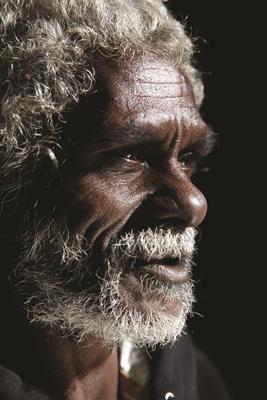JOHN MAWURNDJUL from maningrida (walungurru)
THE LAVERTY COLLECTION - PART III
5 April 2017, Sydney
_MG_9282John.jpg

John Mawurndjul’s artistic career spans more than thirty years of intense and prolific work. He is one of the most innovative indigenous Australian artists. Born in 1952 at Mumeka in western Arnhem Land, Mawurndjul spent his youth living a traditional life with his extended family. He learnt to paint the same way that many Kuninjku learn: by participating in painting the bodies of initiates and dancers in ceremonies. He started to paint for the art market in the late 1970s under the guidance of his elder brother, Jimmy Njiminjuma (1947 – 2004), and his uncle, Peter Marralwanga (1917 – 1987), from whom he learned to use rarrk, the cross-hatching infill, in new and innovative ways. This coincided with the establishment of the Maningrida Arts & Culture arts centre which promotes and markets the works of artists from the Maningrida region.
In the early days of his career, Mawurndjul focused on subjects that are well known to all Kuninjku and often painted by other artists. These included paintings of animals and mythological beings such as Ngalyod, the Rainbow Serpent.
During the late 1980s his work took a new direction and he started to produce large and more elaborate paintings with complex arrangements of figures. He began to get recognition for his work through successful group exhibitions and in 1989 his work was included in the landmark exhibition Les magiciens de la terre at the Centre Georges Pompidou in Paris, France. Gallery Gabrielle Pizzi held his first solo show in 1991, and the same year Mawurndjul was awarded a professional development grant from the Australia Council for the Arts.
Further into the 1990s, Mawurndjul started to focus on painting abstract representation of landscape and works associated with the Mardayin ceremony, a now rarely performed ceremony with clan identity and mortuary themes. It was at this time that fine rarrk started to dominate the entire surface of his paintings. Mawurndjul is an innovator in both the treatment of rarrk and in the iconic representation of Mardayin’s themes.
In 2000, his work was featured in the 12th Biennale of Sydney with a painting dealing with the Mardayin theme and in 1999 and 2002 he won the bark painting prize in the Telstra National Aboriginal & Torres Strait Islander Art Award. Mawurndjul’s works produced in the 2000s are almost exclusively dealing with abstract representations of important places located in his clan estate.
In 2003, he was the first Indigenous artist to win the prestigious Clemenger Contemporary Art Award at the National Gallery of Victoria, Melbourne. In 2004, his work was included in the exhibition Crossing Country: The Alchemy of Western Arnhem Land held at the Art Gallery of New South Wales, Sydney, which demonstrated his position as the leader of the Kuninjku contemporary art movement. It showed how he is today influencing other Kuninjku artists to paint in his style.
In September 2005, Mawurndjul opened the first retrospective of his work at the Musée Jean Tinguely in Basel, Switzerland, which then travelled to the Sprengel Museum in Hanover, Germany. In 2005 and 2006, he also worked on a major commission for the new Musée du quai Branly, Paris, France. He painted a massive column and designed the ceiling for the museum bookshop. His work was included in October 2007 in the first Triennial of Indigenous Art to be held at the National Gallery of Australia, Canberra. In 2009 he was awarded the Melbourne Art Foundation Artist Award. This was another acknowledgement of Mawurndjul’s exceptional contribution to Australian Indigenous art.
APOLLINE KOHEN
RETURN TO CATALOGUE